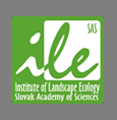History
The origin of the Institute is in the Department of Biology and Landscaping in the Biological Institute, SAS (1961–1964), which gave rise to the Institute of Landscape Biology, SAS (1965–1974). Later, several departments were merged into the Centre of Biological-Ecological Sciences, SAS (1975–1990). The independent Institute of Landscape Ecology of SAS was established on July 1, 1990. M. Ružička stood at the birth of all four workplaces.
Since 1967, ILE SAS regularly organizes international symposia. In 2015, it was already the 17th international symposium on the landscape research.
In 1982, during the 6th International Symposium on the landscape research in the city of Piešťany, at the initiative of the both foreign and the Slovak landscape ecologists, in recognition of the development of landscape ecology in the former Czechoslovakia, International Association for Landscape Ecology was founded. Nowadays, this organization brings together over 1500 members from around the world and organizes world congresses and symposia. In 2004, Slovak landscape ecologists founded the Slovak Association for Landscape Ecology (IALE-SK), which is a regional organization of IALE. The aim of IALE-SK is to strengthen the position of landscape ecology as a scientific basis for worldwide landscape analysis, planning and management, and also to increase international cooperation and international relations in the landscape ecology.
The Institute stuff elaborated internationally recognized methodology of LANDEP (Landscape Ecological Planning), which is mentioned in official documents of the United Nations Conference on Environment and Development (Rio de Janeiro, 1992) and included in the Agenda 21 (Chapter 10) as one of the recommended methodology for an integrated approach in the management of natural resources and landscape.
The Institute successfully participates in international projects of EU Framework Programmes. So far, we participated in 17 projects of the EU Framework Programmes: FP5 (8 projects), FP6 (5 projects), FP7 (4 projects): BIOPLATFORM, EVALUWET, BIOPRES, BIOHAB, BIOSCENE, GLORIA, BIOFORUM, ALTER -Net, CARBOMONT, SoBio, SENSOR, RURAL-ETINET, BIOSTRAT, POINT EBONE, OpenNESS, LIFEWATCH.
Currently we are involved in two projects of HORIZON 2020.
The Institute is one of the few not only in Slovakia but also in the international arena, which applies comprehensive research of landscape based on an integrated approach to the landscape. There was elaborated the LANDEP methodology based on the geosystem approach to the landscape and applied in several studies. As an example, besides to the atlases, a comprehensive landscape-ecological study is worthy to mention, which responded to the need to address the new situation in the Tatra Mountains after windstorm (2008) as well as a proposal for the landscape-ecological optimal use of urbanized area in the region of Bratislava (2006).
The Institute has been carrying out intensive and extensive research in the three UNESCO Biosphere Reserves: High Tatras, Eastern Carpathians and Poľana. Finished research projects were multidisciplinar and significantly contributed to scientifically-based ecosystem management.
The Institute played a major role in the development and enforcement of environmental legislation. The experience of employees was used in the formulation of a number of laws, decrees (eg. law on nature protection, an amendment to the Decree of the Building Act, the law on land consolidation, law on the assessment of environmental impact), but especially in development of methodologies (methodology of territorial system of ecological stability, landscape plan methodology, methodology of ecological carrying capacity).
ILE SAS participated in the establishment of several environmental and ecological departments. Founders of new departments were often former employees of the Institute who felt the need to apply their scientific skills in the teaching process. In 2000 a joint workplace of the Institute of Landscape Ecology and the Department of Ecology and Environmental Sciences (Faculty of Natural Sciences of the Constantine the Philosopher University in Nitra) was created. Employees of both departments together participate in the education of Ph.D. students in the study program Protection and land use, they educate students of bachelor and master degrees and also work together on joint projects.
The Institute is an internationally recognized workplace in the field of landscape-ecological research. It is a member of an international network of excellence in the long-term ecosystem research ALTER-NET. It is also the national Center of excellence for protection and use of landscape and for biodiversity and the Castles in Slovakia Centre of Excellence SAS.
The Institute is a member of the LTER program. It coordinates research on three LTER sites – Báb village, Jalovecká dolina valley; Alpine peaks of the Tatras Mts and there were also established research areas on Kráľova hoľa peak, which will be proposed as LTER research sites. It also coordinates the national network of LTER Slovakia, involving other institutions.
The Institute is closely involved in the process of implementing sustainable development in Slovakia. Several employees participated in preparing the National Strategy for Sustainable Development (L. Miklós, T. Hrnčiarová, Z. Izakovičová, M. Moyzeová) and its opposition, they also participated in the processing of methodology for the creation of Agenda 21 at regional and local levels and its testing in model territories (Stredné Pohronie region, Parná river basins, Suchá nad Parnou village, Križovany nad Dudváhom village).
The Institue has also been successfully involved in the implementation of the Convention on the landscape. It developed typology of geosystems of Slovakia, which were presented in the form of The Atlas of the Representative Geoecosystems of Slovak Republic, which come in three language versions (Slovak, English and Hungarian) and also processed typology of the landscape of Slovakia and proposed optimal landscape-ecological management for the different types of landscape.
The Institute expertly coordinated two atlas publications: Landscape Atlas of the Slovak Republic (2002) and Landscape Atlas of the Czech Republic (2009), which certainly is unprecedented in scientific and professional circles.
Several employees of ILE SAS act as a members of the advisory bodies of the Government of SR and the National Council of Slovakia and as national delegates of Slovakia.



 contact
contact
